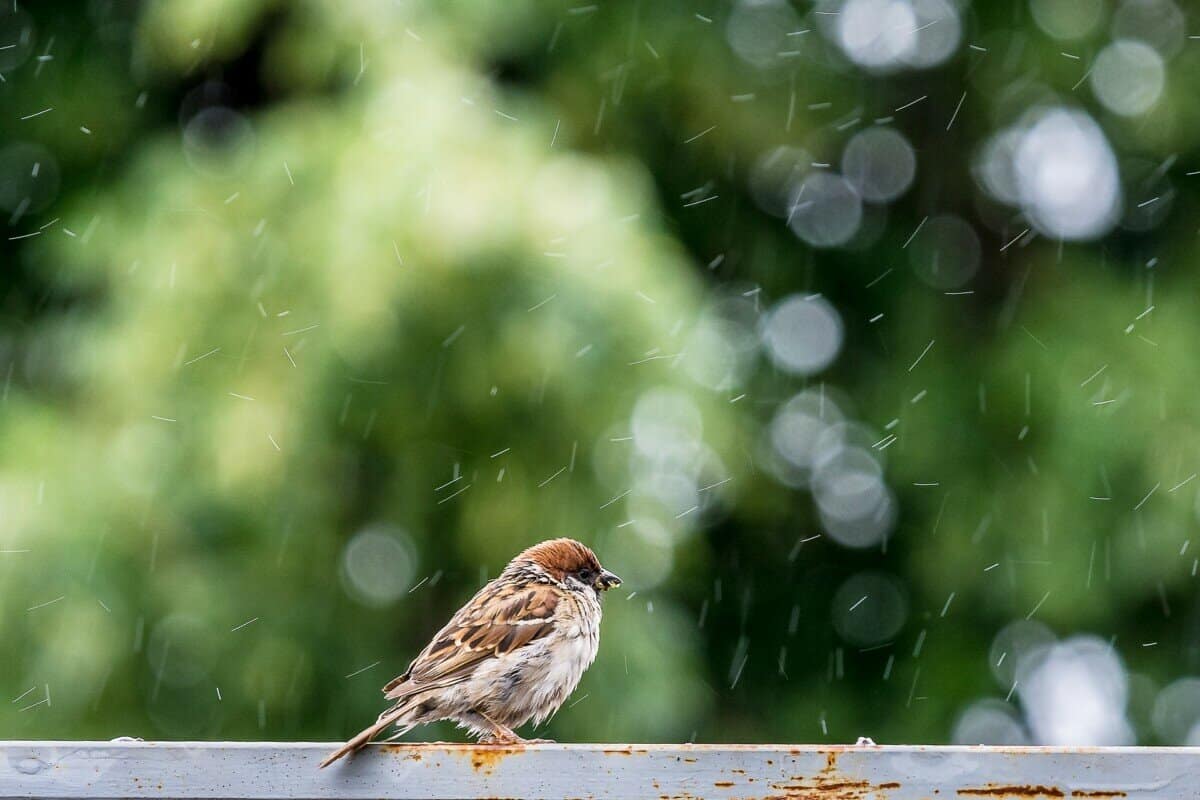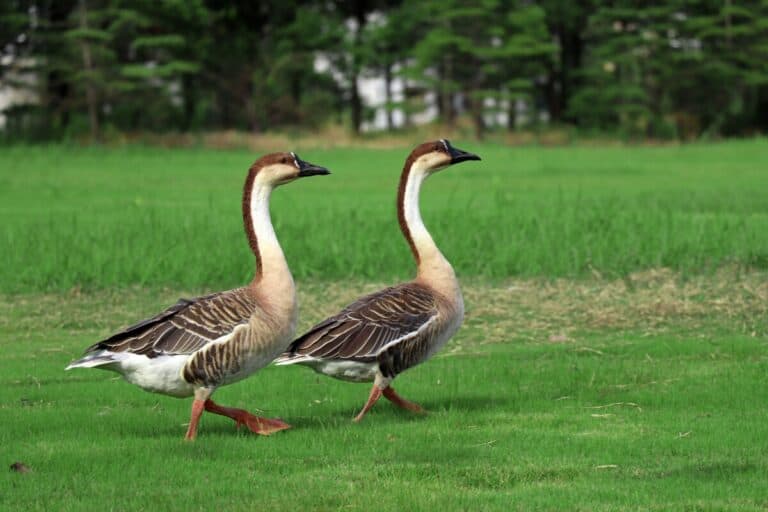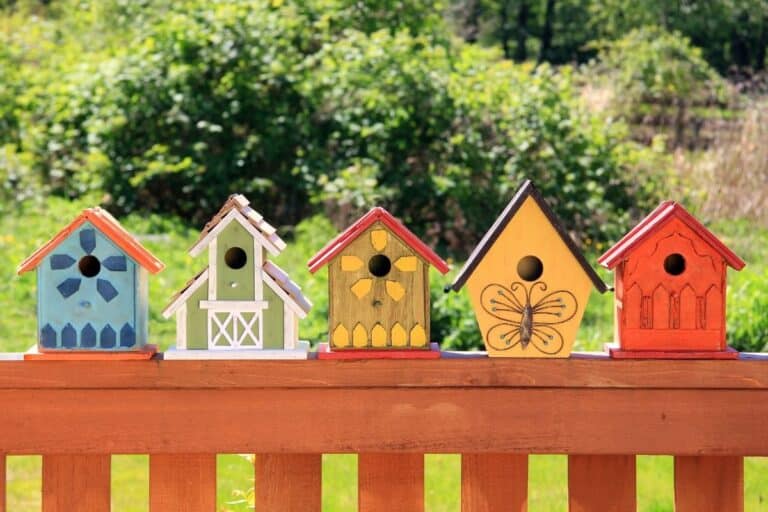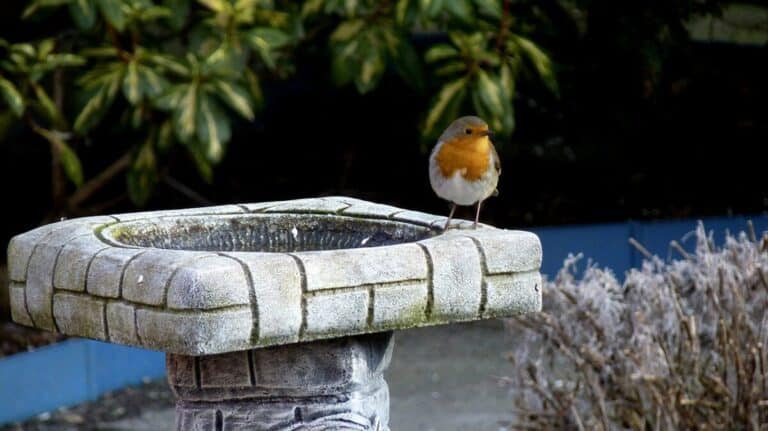Can Birds Fly In The Rain? – A Helpful Explanation
We’re reader-supported; we may earn a commission from links in this article.
I remember I was once out birding outside and it was raining really heavily. I started to wonder: Can birds fly around in the rain? Given that they were wet, would it make sense to do? So, if you’re wondering the same thing as my curious self, then rest easy because I did a little digging around on the internet for some answers. Here’s what I found:
Most birds can fly in the rain. However, birds may not be able to fly in the rain when it gets too heavy like in torrential weather or in thunderstorms. Many birds prefer not to fly in the rain at all as it would require too much effort, mostly due to the increased air pressure when it rains.
Though birds can fly in light rains and choose not to in heavy rains, it can be VERY interesting to find out the science behind why they do not take flight! Join me as I unravel this mystery together!
What Birds Need For Flight
Before we dive right into the full answer of how rain affects bird flight, we need to first understand how bird flight works in a normal weather conditions.
Lightweight body features
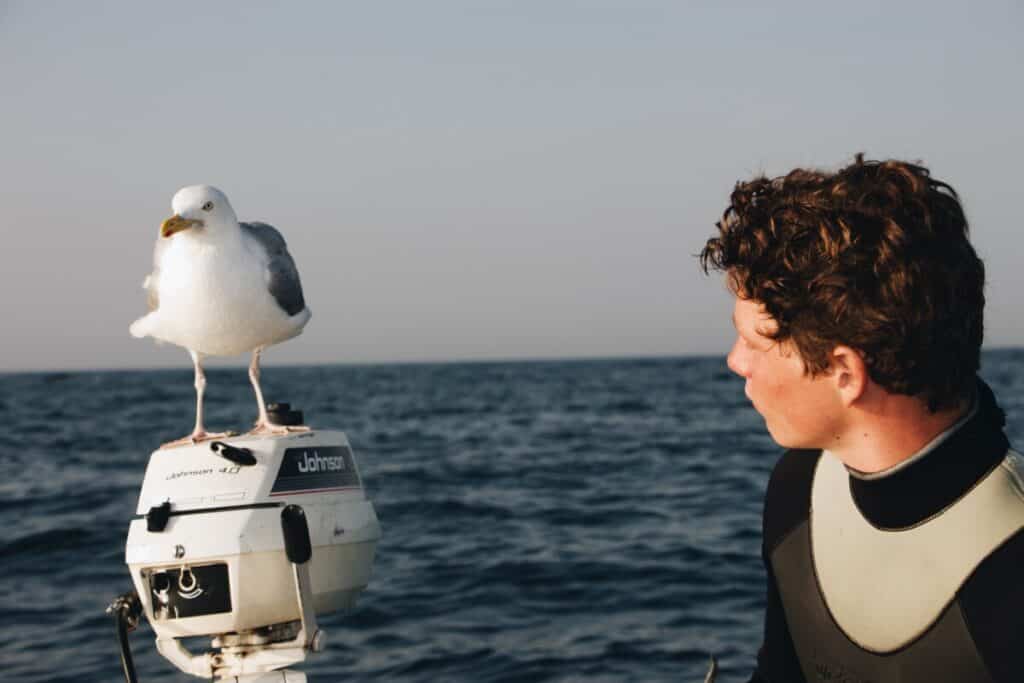
A typical bird has lightweight body features. This includes hollow bones and feathers that have to be light and not weight them down in flight.
As their lightweight body features enable the bird to have the least amount of weight possible, this suggests that this is an aspect that is paramount to bird flight.
Therefore, this is their weight is one of the aspects to keep in mind if they were to be soaked in the rain – which we will discuss later on.
Waterproof Feathers
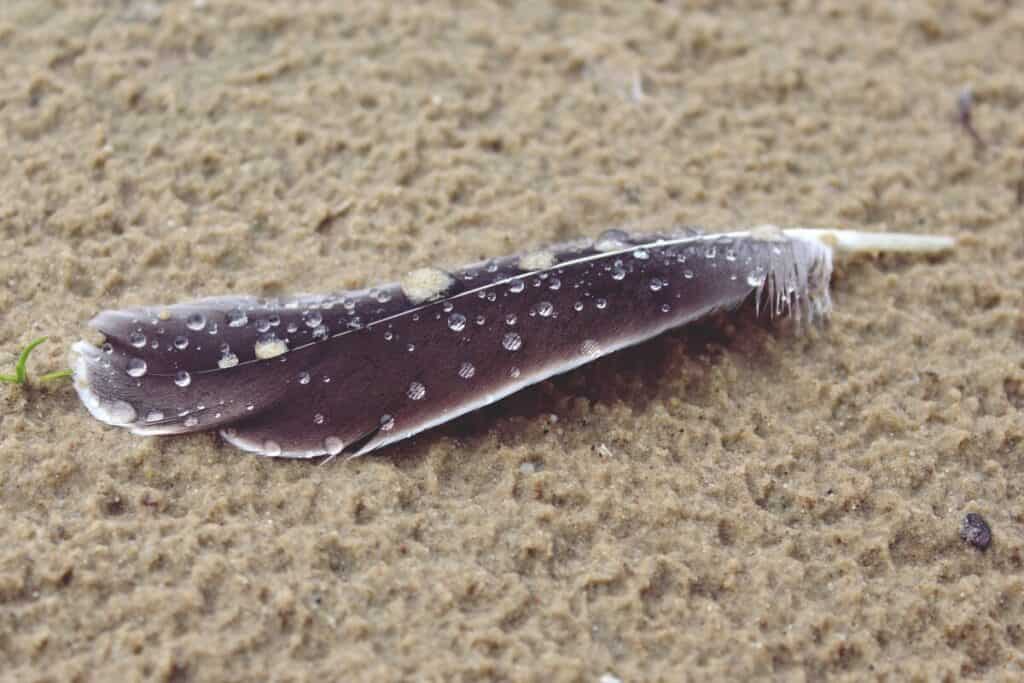
Yes, bird feathers are waterproof, but they are not naturally so. Birds are able to gather oil onto their beaks by rubbing against their uropygial gland somewhere near the tail and then rubbing it all over their feathers.
The uropygial gland is also known as the preen gland, and thus this action of birds making their feathers waterproof is known as preening.
The oil that is smeared all across their feathers helps to keep the feathers in good condition and keeps water from reaching the bodies of certain water birds.
Consuming high-energy food
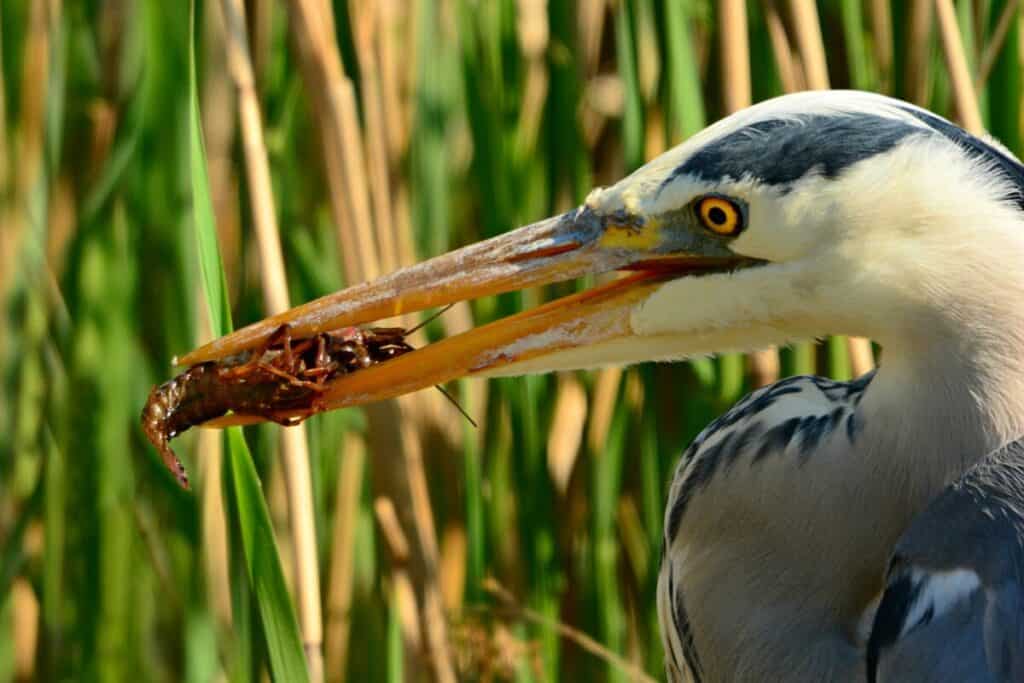
Birds have to consume lots of high-energy food in order to keep their energy reserves high for flight. Examples of prey that birds hunt are typically bugs and they contain lots of protein and energy for the bird’s diet.
As bird flight is highly energy-intensive, birds will tend to conserve energy and save flying only for instances when they really need to and with the lowest resistance.
The Impact Of Light And Heavy Rain On Birds
Light Rain
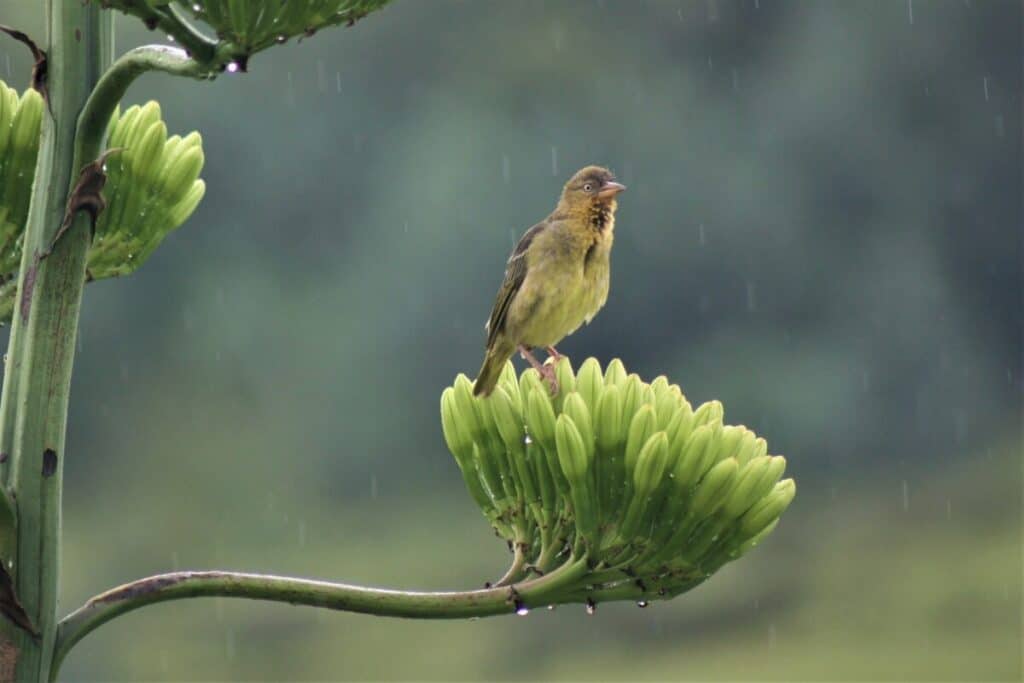
The impact of light rain on bird flight is actually minimal. It is not actually uncommon to see some birds flying around in light rains as this generally does of affect them.
As discussed earlier on what birds need in order to fly, the light rain does not weigh the bird quite enough for it to be discouraged from flying.
This is due to the waterproof layer that birds have applied to their feathers that allow water to flow off their surfaces, thereby preventing the build up of water on their body which can actually weigh them down too much for flight.
As the takeoff of a bird is generally energy intensive, the light rain does not cause enough additional weight for birds to be weighed down in light rains.
Heavy Rain (Thunderstorms and monsoon rains)

In heavy rains, the situation is a whole lot different. In cases such as in a thunderstorm or simply during the monsoon seasons in countries that experience them, birds tend not to take flight.
Here are a number of reasons can actually discourage a bird from taking flight:
- Air Pressure Changes
Air pressure changes is biggest reason why birds choose not to fly in heavy rains. As flight takes place in the medium of air, the decrease in atmospheric pressure during a rainstorm can seriously mess with the birds’ flight patterns.
Without going into too much about aerodynamic theory, basically a lower atmospheric pressure will make the air less dense.
A less dense environment makes it difficult for birds to find the lift needed for them to take flight by flapping. Furthermore, the water droplets in the air make the air less dense, making it even more difficult to take flight in the rain.
2. Strong Winds
In a rainstorm or during torrential rain, the rain is usually accompanied with other elements such as strong winds. As birds are lightweight and are easily tossed around in the wind, any bird that risks to take flight during such a heavy storm, risks the chance of losing their control in flight.
3. Rain Weighs On Them
In heavy rains, not only are birds constantly pelleted by the larger droplets that affect their flight, their waterproofing on their feathers can be of little use now.
As the rain is constantly pouring, water will eventually seep past the waterproofing that was done by preening, and effectively soak the birds completely. In such a case, their feathers are in no condition to provide the lift and drag that they need for flight.
What Birds Do In The Rain
Now we know that birds can fly a little in light rain and almost not at all in heavy rains, I can’t help but wonder what birds actually do in the rain. Do you also wonder the same thing?
Well, there are a few things that they do:
Seek shelter
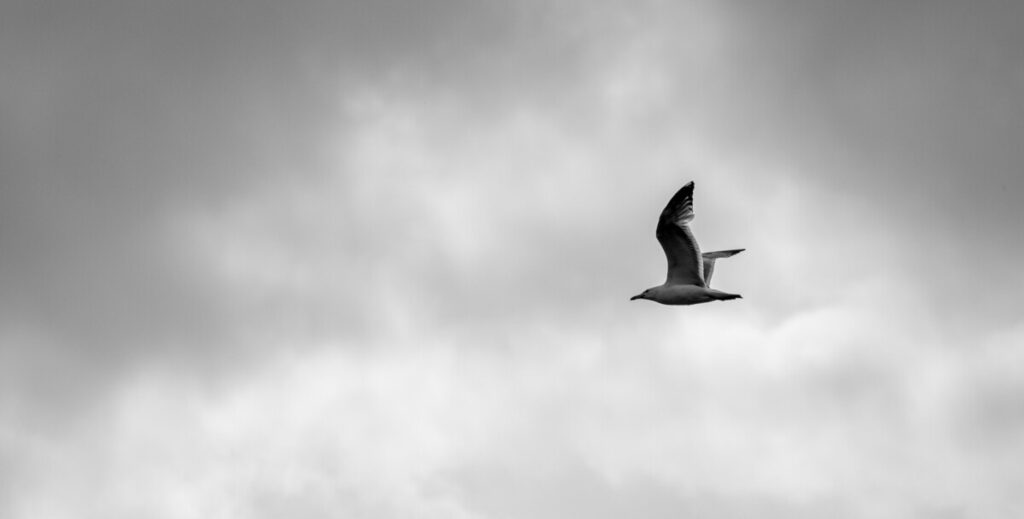
Of course! Birds are just like us, when they get constantly pelleted by rain, our first instinct is to get away from it. If the rain still hasn’t gotten heavy yet, then birds might even fly to a place where they can be under shelter.
This can even be under man-made structures or natural structures such as trees.
While under shelter, they may choose to fluff up their feathers to maintain as much heat as possible.
The less wet the bird, the happier the bird.
Adopt a ‘rain’ posture
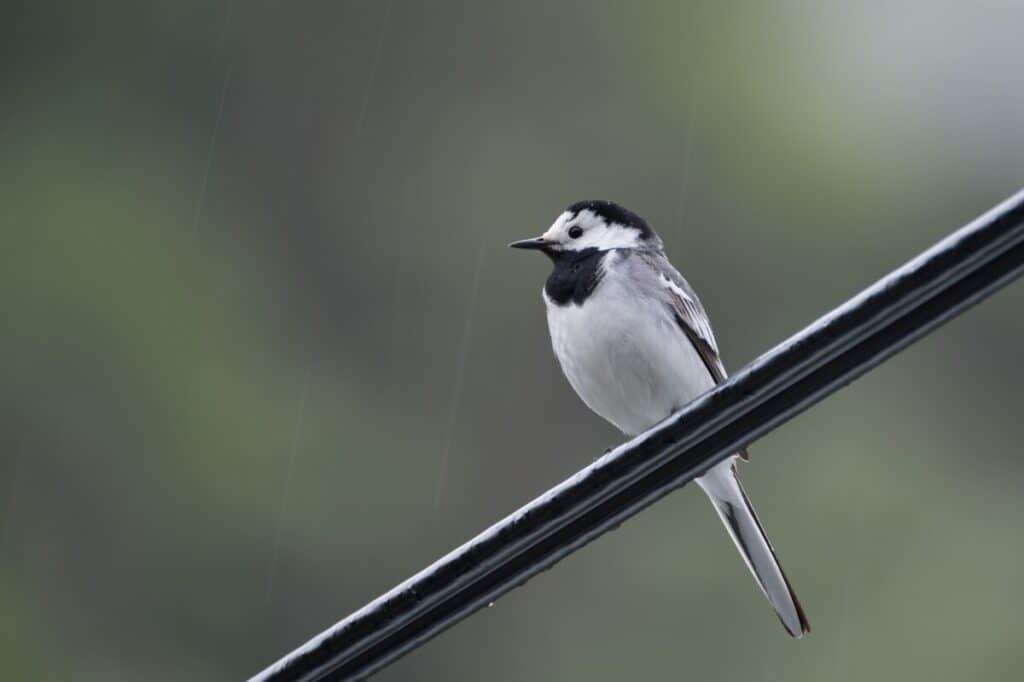
If you’d closely observe birds in the rain, you’ll notice this: they will withdraw their heads, point their bills toward the direction of where the rain is, stand upright, and keep their feathers sleeked.
This allows for the maximum heat retention in their bodies while allowing for the most amount of water to slide off their bodies.
This phenomenon was interestingly first observed by Hume, along with their tendency to huddle together to tide out the rain and keep each other warm.
Going Birding In The Rain
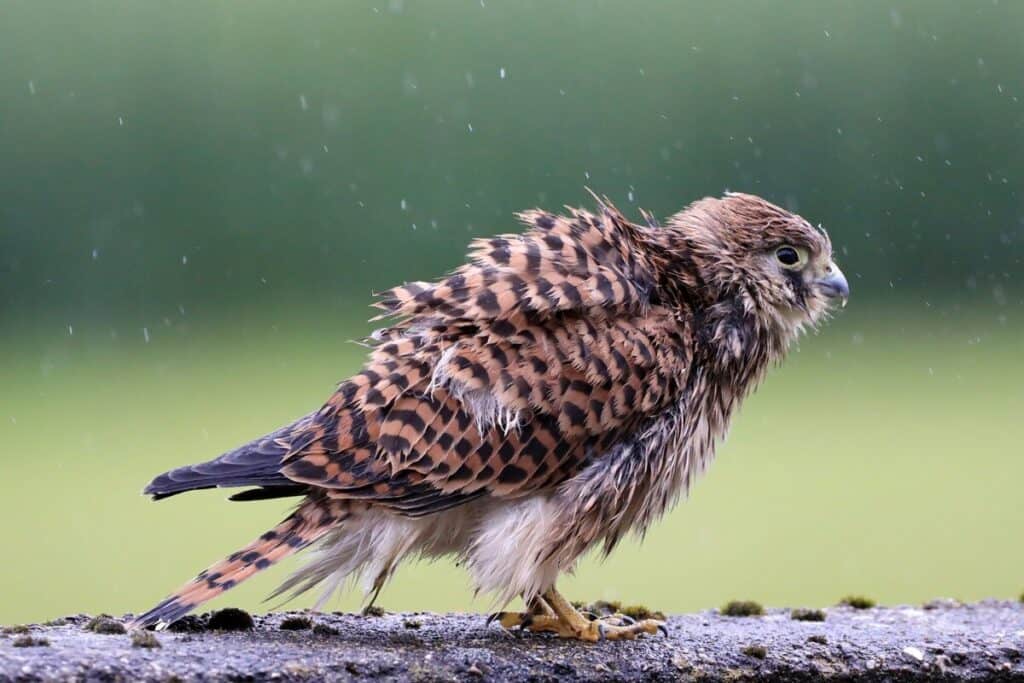
Ok so if you’re a birder like me and you’ve read on whether birds can fly in the rain, you might be wondering: “What’s the birding experience like in the rain?”
Well, you see, I’ve been thinking of the exact same thing as I’ve always wondered if I should head back home when I see the rain coming while I’m outdoors.
Therefore, I wrote an article on how does rain affects the birding experience here. Do check it out!
Final Thoughts
Now that you birds can fly minimally in light rain and not at all during heavy rains, be sure to observe our feathered friends in the wild next time and witness it for yourselves!
Don’t forget to check out the classic posture that birds adopt during heavy rains as it’s really cool. Alright, thanks for reading and happy birding!
My Recommended Birding Resources:
Hey there, Justin here!
Here’s a list of all my favorite resources, products, and brands I trust and love.
My Celestron Nature DX 8×42 Binoculars: It’s a great budget pair for beginner birders. Highly valued for its price! Read my review.
Safe Paint for Bird Baths Guide: Learn about non-toxic paint for painting bird baths.
Safe Sealers for Bird Baths Guide: Learn which sealers are safe for bird baths.
Safe Paint for Bird Feeders Guide: Learn what special care needs to be taken to paint bird feeders with the right paint.
Safe Paint for Birdhouses Guide: Learn about non-toxic paint for painting birdhouses. (Not the same as bird baths!)
Bird Identification Apps Guide: 2 of my favorite birding apps are Merlin Bird ID, and eBird Mobile! Merlin is great for tracking and identifying birds, and eBird Mobile is great for tracking the birds sighted when birding.
Check out my resources page for the full list of resources I recommend!

Justin Chia
Justin is the founder and author of Birding Outdoors. He is a Nanyang Technological University (NTU) alumnus with a Bachelor of Biological Sciences and a former data analyst.
Now, Justin runs the Birding Outdoors blog full-time, hoping to share his deep love for birds, birding, and nature with others.
To unwind, Justin enjoys gaming and reading.

